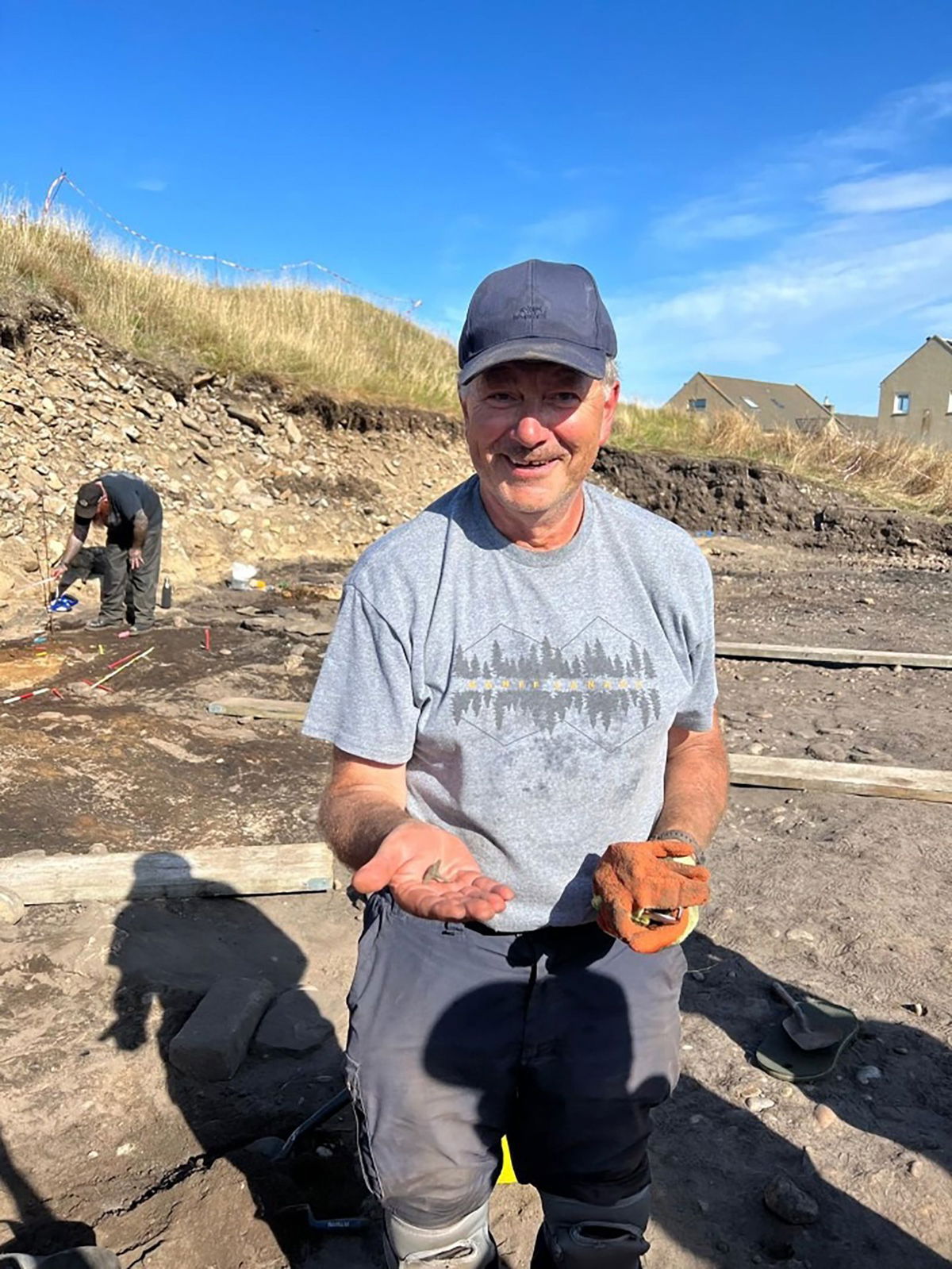‘Enthusiastic amateur’ finds ‘remarkable’ Pictish ring buried for more than 1,000 years

John Ralph
London (CNN) — A “remarkable” Pictish ring with “an intricate setting” was discovered in Scotland by an amateur archaeologist after being buried for more than 1,000 years.
The “kite-shaped ring with a garnet or red glass center” was unearthed by a volunteer at the site of a fort in Burghead, in northeast Scotland, according to the University of Aberdeen, which led the dig.
John Ralph, a former engineer and graduate of the university, signed up as a volunteer for the Burghead digs after retiring.
Ralph, whom the university said describes himself as an “enthusiastic amateur,” had many moments over the two-week excavation when experts told him “he had a knack for finding ‘shiny pebbles.’” It was his third dig at the site.
“So when, on the last day of the final dig, he found something that looked interesting, he didn’t hold out much hope. It was only when he showed it to a fellow volunteer and his eyes lit up that he realized he might ‘have something,’” the university said in a statement Wednesday.
The Professor of Archaeology who led the excavation, Gordon Noble, said what Ralph presented to him was “truly remarkable.”
“John was digging and then came over and said ‘look what I’ve found,’” Noble said, according to the statement. “Even before the conservation work we could see it was something really exciting as despite more than a thousand years in the ground we could see glints of the possible garnet setting.”
The Picts were an ancient people who lived in what is now eastern and northeastern Scotland. Little is known about them, and “only limited and contentious documentary sources survive to evidence their six centuries of life,” according to the University of Aberdeen’s website. All traces of the Picts disappeared from the written records in the 9th century CE, it said.
Noble explained that there are “very few Pictish rings which have ever been discovered and those we do know about usually come from hoards which were placed in the ground deliberately for safekeeping in some way.”
“We certainly weren’t expecting to find something like this lying around the floor of what was once a house but that had appeared of low significance so, in typical fashion, we had left work on it until the final day of the dig,” Noble said.
The ring is undergoing analysis at the National Museum of Scotland’s Post-excavation Service, the university said.
Ralph, who grew up in Burghead, said he was thrilled to have helped understand the region’s Pictish past. “It is a real thrill to dig up an artefact in the knowledge that you are probably the first person to see it for 1,000-1,500 years,” he said. “It becomes a real guessing game of who owned it, what did they use it for and how was it lost.”
Susan O’Connor, Head of Grants at Historic Environment Scotland, said Ralph “played such a pivotal role in bringing it to light – literally!”
While the materials used to make the rink “are not particularly valuable in today’s monetary sense, this find is hugely significant for what it tells us about Pictish lives and society,” O’Connor said. “We’re excited to find out more once our colleagues in the National Museum have finished their investigations.”
The-CNN-Wire
™ & © 2024 Cable News Network, Inc., a Warner Bros. Discovery Company. All rights reserved.